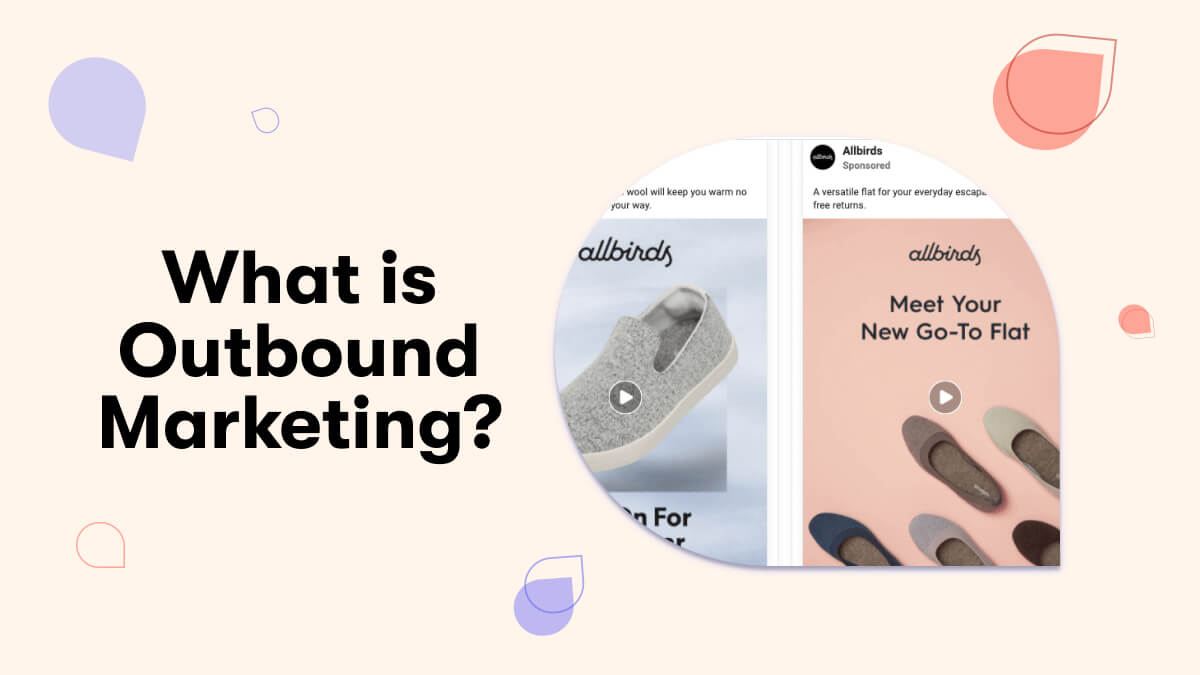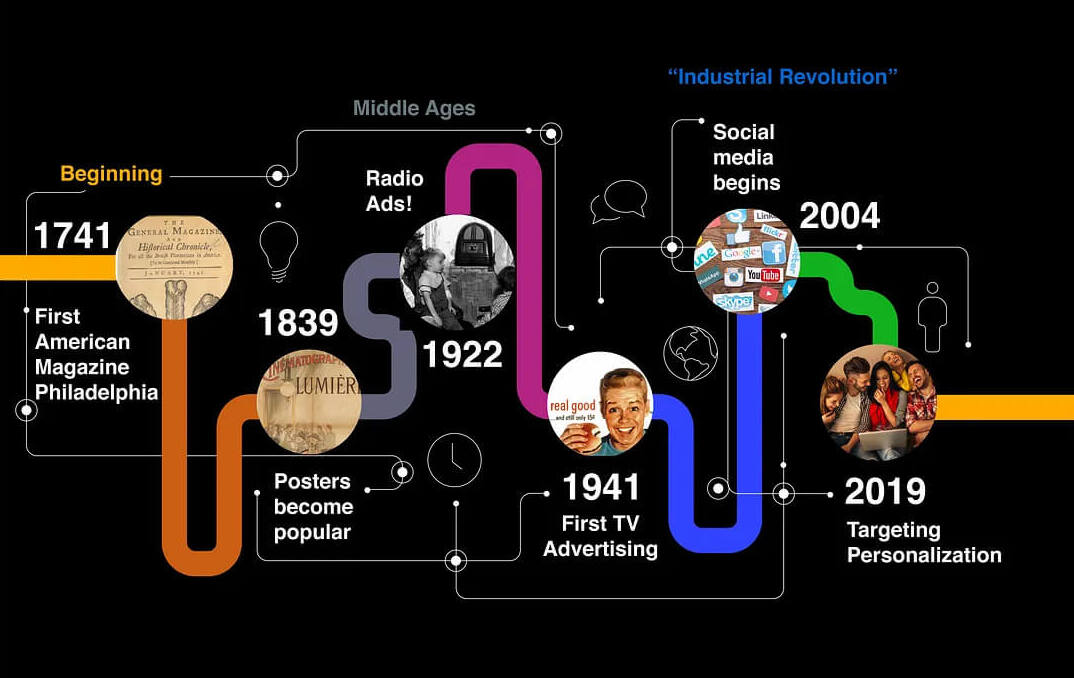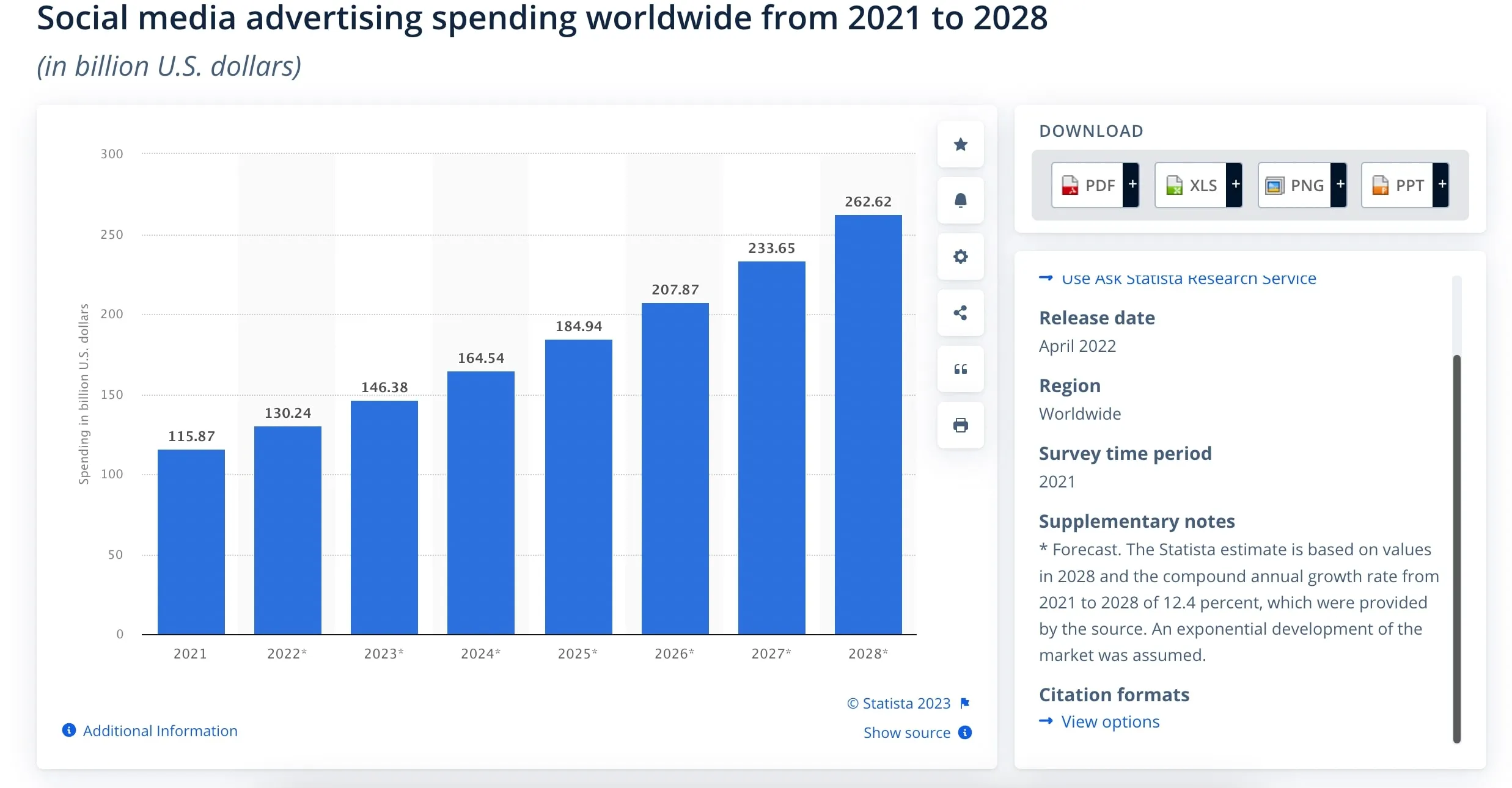What is Outbound Marketing?
Outbound marketing is a traditional form of marketing where a company initiates contact with potential customers to promote products or services.
Published April 1, 2024

Outbound marketing is a traditional form of marketing where a company initiates contact with potential customers to promote products or services. Examples of outbound marketing include cold calling, direct mail, billboards, television, radio ads, and tradeshow presentations
This approach involves pushing the marketing message out to a broad audience in the hopes of generating sales or leads (also known as push marketing). Outbound marketing seeks to gain attention through interruption and broadcasting, aiming to reach a large number of people to find those few who are interested in the offer.
Examples of outbound marketing
Outbound marketing encompasses various tactics used to reach potential customers through direct and indirect channels. Here are some common examples:
- Cold calling: Reaching out to potential customers via phone without prior contact is a proactive approach to generate leads. For instance, a software company might use cold calling to pitch their latest product directly to businesses, providing a personal touch and immediate feedback on their offering.
- Cold emails: Sending emails to an email list of contacts that had no prior communication or relationship with the company. Cold emailing is a very popular tactic among SaaS companies and marketing providers.
- Direct mail: Sending promotional materials directly to people’s homes or offices. A real estate agency, for example, might send postcards or brochures to local residents advertising new listings or offering free home valuation services to drum up business.
- Billboards and outdoor advertising: Large-scale ads displayed in high-traffic areas. A clothing brand might use billboards in major city centers to create buzz around a new collection launch, capitalizing on the high visibility to passersby.
- Television and radio commercials: Broadcasting ads to a wide audience through traditional media channels. A fast-food chain could use TV commercials to promote a limited-time offer, reaching a broad audience quickly and creating a sense of urgency.
- Trade shows and event sponsorships: Presenting products or services in industry-specific events to engage with potential clients. For example, a tech company might sponsor a trade show to demonstrate their latest innovations in front of a targeted audience of industry professionals and decision-makers.
These examples illustrate the diverse range of tactics encompassed within outbound marketing, each with its strengths in reaching potential customers through various direct and indirect channels.
How does outbound marketing work?
Outbound marketing (also known as traditional marketing) works by delivering a marketing message directly to a broad audience, often through mass media channels. The process typically involves identifying a target demographic and then using various channels to broadcast a message to this group.
For example, a company may use market research to identify a demographic and then employ television ads, print media, or direct mail campaigns to reach that audience.
The goal is to create brand awareness and stimulate interest, leading to increased sales or inquiries. Outbound strategies are generally more straightforward and less personalized, prioritizing volume and reach over tailored engagement.
Pro tip: want to improve your digital marketing strategies? Talk to one of our vetted digital marketing agencies.
History of Outbound Marketing
Outbound marketing, as we know it today, has evolved significantly from its early beginnings. The earliest forms of advertising included town criers announcing goods in the marketplaces of ancient civilizations.
With the advent of print media, outbound marketing took a more tangible form through newspaper ads in the 17th century. This era marked the beginning of paid advertising, where businesses started to pay for space in printed publications to promote their products or services to a wider audience.
The 20th century saw a boom in outbound marketing with the rise of radio, television, and later, telemarketing. The mid-1900s was a golden era for TV and radio commercials, as these mediums became the primary way for companies to communicate with consumers on a mass scale.
At the turn of the millennium brought about a shift in consumer behavior and technological advancements, leading to the gradual decline of traditional outbound marketing techniques.
The introduction of the internet and digital platforms transformed the way businesses approached marketing, giving rise to inbound marketing strategies focused on creating content that pulls people toward the company.
Despite these changes, outbound marketing has retained its relevance by adapting to new formats like online display ads, email marketing, and social media ads, and continues to be a huge part of any marketing strategy.
Pros of outbound marketing
- Broader Reach: It can quickly expose your product or service to a large audience, increasing brand awareness. This approach is beneficial for launching new products or entering new markets where you need to establish your brand presence quickly and effectively.
- Speed: Allows for rapid dissemination of information about new products or offers. This is especially useful for time-sensitive promotions or when trying to capitalize on current trends or events that align with your brand or product offerings.
- Control: Marketers have complete control over the message, timing, and medium. This level of control ensures that the brand's image and message remain consistent across all marketing channels, which is crucial for maintaining brand integrity.
- Diverse Marketing Mix: Incorporating outbound marketing into the overall marketing strategy ensures a diverse marketing mix that can adapt to changing market conditions and consumer behaviors. It helps in mitigating risks associated with relying solely on one type of marketing approach.
Cons of outbound marketing
- Cost: Generally more expensive due to the costs associated with traditional ad spaces like TV, radio, or print. These channels often require a significant upfront investment without a guaranteed return, making them a riskier choice for smaller businesses or those with limited marketing budgets.
- Lower Engagement: outbound marketing tactics are often considered intrusive, leading to lower engagement rates as consumers may ignore unsolicited messages. With the rise of ad blockers and the ability to skip or mute advertisements, capturing and retaining consumer attention through outbound methods is increasingly challenging.
- Difficulty in Tracking ROI: Measuring the effectiveness of outbound marketing campaigns can be challenging compared to digital strategies. Traditional media doesn’t offer the same level of analytic data as digital platforms, making it difficult to track customer engagement, conversion rates, and overall campaign performance.
Is outbound marketing still important?
All these drawbacks notwithstanding, outbound marketing channels remain an important component of a comprehensive marketing strategy for several reasons:
- Reach and Awareness - it helps you reach broad audiences and improve engagement at various points along the customer journey.
- Targeted Messaging - you have full control of your messaging, the target audience, and you can create relevant content for specific segments of your marketing funnel.
- It's predictable - you are able to reach target audiences with high purchase intent pretty consistently.
- Boosts your inbound marketing channels - you can easily promote your blog posts and organic social media marketing with ads
While outbound marketing is often associated with higher costs and lower engagement rates compared to inbound marketing, its ability to rapidly generate awareness and reach a wide audience makes it a valuable tool in the marketer’s toolkit.
In today’s digital age, the key is to integrate outbound tactics with inbound strategies to create a balanced and effective marketing plan.
Outbound marketing strategies
Effective outbound marketing efforts often combine multiple channels to maximize reach and impact. These can include:
- Developing a clear message that resonates with the target audience and reflects the brand’s value proposition.
- Segmenting the market to tailor the approach to specific demographics or customer needs.
- Integrating with inbound marketing efforts to create a cohesive marketing plan. Boost organic social media posts or run social media ads to promote organic content marketing efforts.
Inbound vs. outbound marketing
Inbound marketing contrasts with outbound by focusing on attracting customers through relevant and helpful content, often online, that pulls people toward the company and product naturally.
While outbound is proactive and broad-reaching, inbound is more passive and targeted, relying on the interest of potential customers to engage with content and move through the sales funnel.
How to make the shift from outbound to inbound marketing
Transitioning from outbound to inbound marketing involves a strategic shift towards content creation, online presence, and customer engagement. The best way is to combine these two forms of marketing into a unified approach.
Businesses can start by:
- Creating valuable content that attracts and retains an audience. Create owned assets - such as blog posts, video content, podcasts, white books, and other marketing materials.
- Optimizing digital assets like websites for search engines to increase organic reach. Use search engine optimization to get more qualified leads and customers.
- Retarget your visitors using email marketing campaigns. Build out your email list and regularly communicate with your prospective customers.
- Leveraging social media to build relationships and engage with potential customers. Run social media advertising campaigns on multiple social media platforms (Facebook, Instagram, TikTok). Also, Use influencer marketing and launch partnerships.
- Creating a comprehensive advertising strategy - use search ads and display ads to expand reach to larger audiences and grow your customer base. Work with a vetted paid advertising agency to increase your ROAS and scale your conversions.
This shift requires a mindset change from pushing messages to providing value, focusing on building long-term relationships with customers through trust and engagement.











